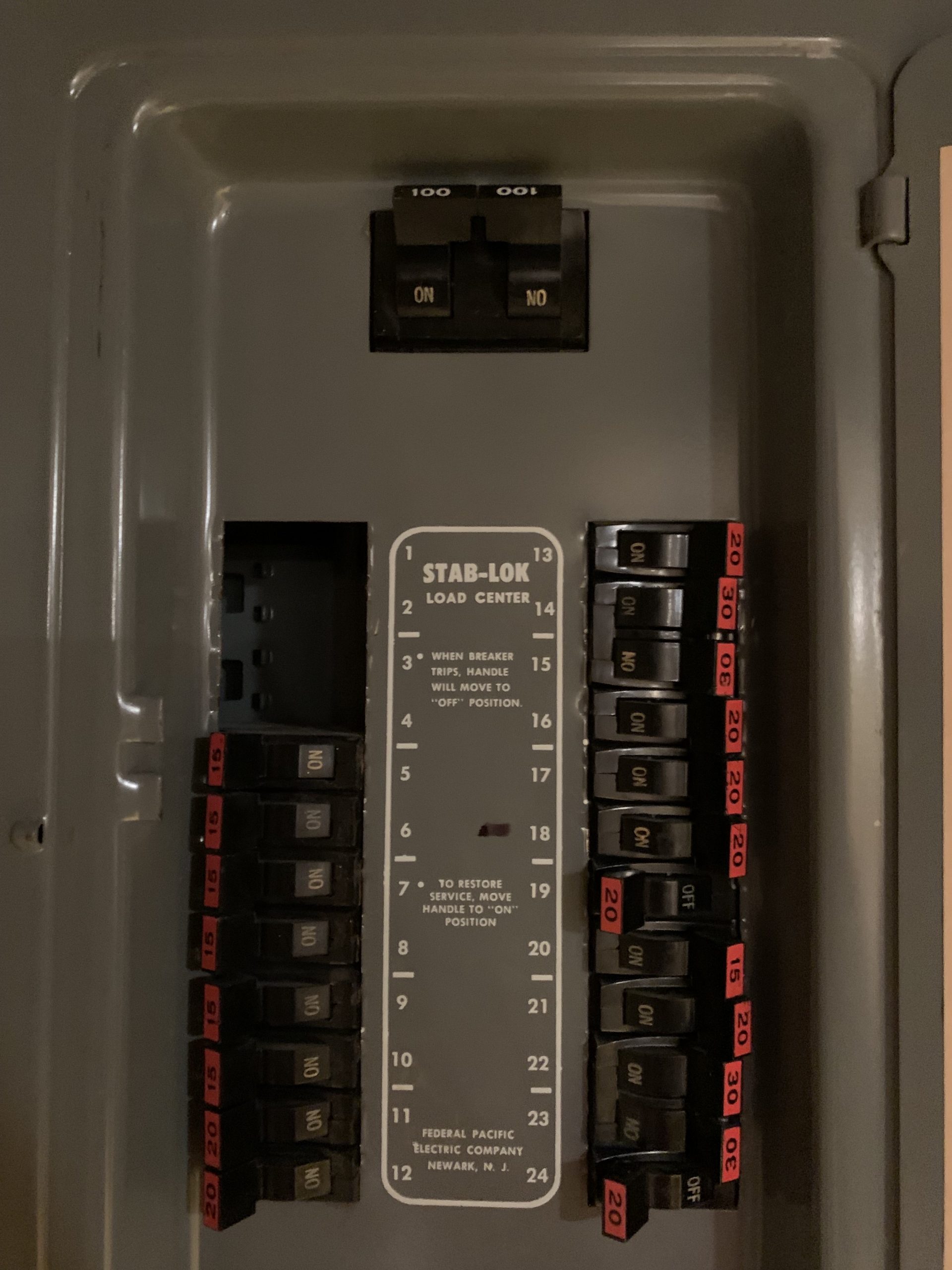Last Updated on November 9, 2022 by
From the 1950s until the 1980s, Federal Pacific Electric Company (FPE) is among the most popular circuit breaker panel manufacturers in North America. Thousands of their panels have been put in houses across the United States. Electricians and home inspectors frequently discovered that Federal Pacific Electric panels declined to deliver enough protection to householders and their families over time. Experts now claim that while FPE panels may appear OK for years, they can overheat and become fire dangers after a single inrush current or short circuit.
Federal Pacific Panels
According to a class-action suit filed in New Jersey, the Federal Pacific Electric (FPE) Company “violated the Consumer Fraud Act because FPE intentionally and willfully supplied circuit breakers that were not tested to meet UL standards,” a class-action suit filed in New Jersey. Under UL 489 test settings, an expert who evaluated the possible risks of Federal Pacific Electric panels indicated that FPE panels fail to trip at a substantially higher rate than conventional panels.
When a breaker fails to trip, a massive amount of electricity from the outside electricity transmission surges into the panel and circuits of a residence. It is no longer possible to manually stop or turn it off once this has occurred.
The Federal Pacific Panels are causing damage
For years, a Federal Pacific Electric (FPE) circuit breaker panel may appear in good operating order. However, experts caution that when a Federal Pacific Electric panel has a high voltage or short circuit, the electrical circuits may not be protected from overheating, potentially posing a fire threat.
According to a report, in the case of a power spike, some Federal Pacific Electric panels failed to function correctly roughly 60% of the time. A Federal Pacific Electric panel is shown to the right. According to the homeowner, a loud pop was heard, accompanied by a sizzling sound and a smoldering odor.
The householder had no means of knowing that one area had too much electrical equipment. The electronics need more power than the circuit can supply. According to the electrician, the wire became hot enough even to fry an egg. Circuit breakers must generally trip to turn off the power and avoid a fire. Two electrical systems and a bus bar were burned because the Federal Pacific Electric breakers were not working correctly.
The circuit breaker panel in your home is a crucial safety feature that reduces the likelihood of electrical fires. If a power surge, short circuit, or circuit overload affects your panel, the breaker should off the power. The wires may heat up and catch fire if the machinery breaks down.
Why do Federal Pacific’s electric panels fail?
One of the most crucial components of a home’s electrical system is the circuit breaker panel. It receives and sends electricity continuously. The panel safeguards households from excessive current and other potential dangers. Experts claim that with proper maintenance by a skilled electrician, today’s electrical panels can perform effectively and safeguard homes for up to 30 years.
If you think that your home has a Federal Pacific Electric, Zinsco, or antiquated circuit breaker panel, or if you have not had your panel tested regularly, you owe it to yourself and your family to get it evaluated. Federal Pacific Electric (FPE) circuit breaker panels, according to experts, may have three fundamental flaws that could be dangerous:
Read More: What Is A Plug Circuit Breaker? A Comprehensive Guide About Plug Circuit Breaker
1. Federal Pacific Electric’s panels may not comply with today’s safety regulations.
From the mid-1950s to the 1980s, Federal Pacific Electric made panels. According to experts, FPE panels manufactured during that period would not comply with today’s revised safety requirements and would be prohibited from being marketed to the general populace. Years ago, acceptable safety protocols were no longer regarded as safe. Experts mention the following examples as to why FPE panels would not pass today’s upgraded safety codes:
- Within the panel box, wires may be tangled.
- Spring-mounted bus bars are an option.
- When the breakers are down, they may still be active.
- Split-bus breakers could no longer comply with current safety regulations.
2. Federal Pacific Electric panels could have severe problems in their design.
According to experts, the design defects found in FPE panels are still not found in other panels of approximately the same age. The following are some examples of design problems in Federal Pacific Electric panels:
- When the resurrected cover is removed, breakers may trip unexpectedly.
- The bus bars’ connections to the breakers may be slack.
- Breakers are frequently jammed in their sockets, causing overpopulation in the panel.
- When installed in sockets, breakers can easily split.
3. There may be production flaws in Federal Pacific Electric panels.
The Consumer Product Safety Commission (CPSC) discovered that Federal Pacific Electric panels might be inappropriate under UL 289 test parameters for residential use. The materials utilized to build the breakers could be flimsy. Consequently, the breakers may still not trip, putting the panel at risk of catching fire.
Troubleshooting Electrical Panels
Circuit breakers that continually trip, a malfunctioning light on the back porch, or an extraction fan that won’t operate properly are just a few of the frequent electrical difficulties that homeowners experience. However, determining the source of the issues can take a considerable amount of expertise and understanding.

